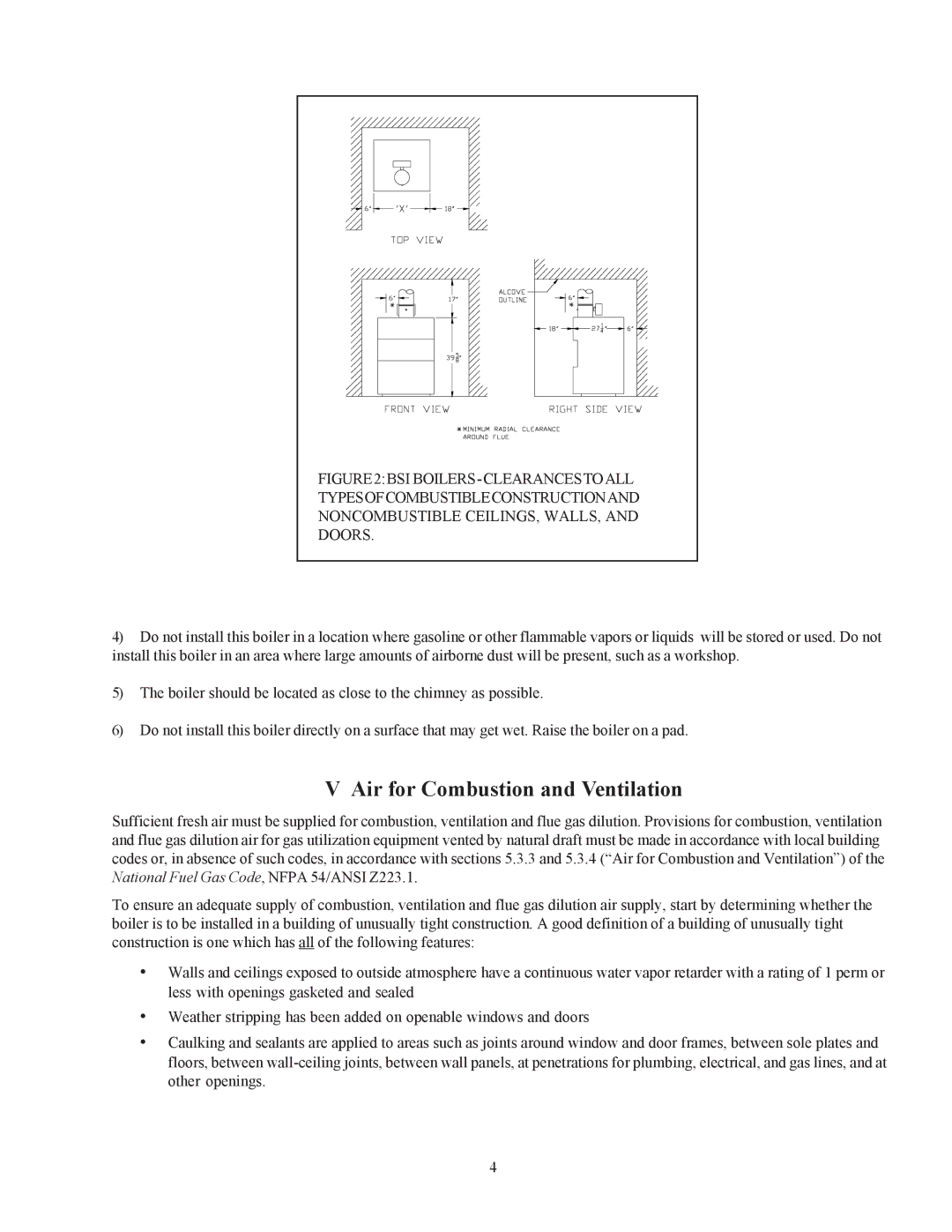BSI069, BSI345, BSI207, BSI172, BSI241 specifications
Crown Boiler Company is renowned for its high-quality heating solutions, with a diverse range of models designed to meet various residential and commercial needs. Among their popular offerings are the BSI series, which includes the BSI379, BSI138, BSI310, BSI276, and BSI103 models. Each of these boilers comes with distinct features, technologies, and characteristics that cater to different applications and preferences.The Crown Boiler BSI379 is a powerful and efficient boiler designed for residential use. It features a stainless steel heat exchanger that enhances durability and improves heat transfer efficiency. The BSI379 operates on natural gas, providing a high thermal efficiency rating which helps to reduce energy costs. With a compact design, it can fit conveniently in various installations, making it a versatile choice for homeowners.
The BSI138 model is another excellent option for smaller residential spaces. It is equipped with advanced technology that allows for quiet operation and minimal environmental impact. This boiler also offers a straightforward control interface, making it easy for homeowners to adjust settings according to their heating needs. The BSI138's lightweight construction and small footprint allow for flexible installation options.
Moving on to the BSI310, this model is designed for medium to larger-sized homes. It features an electronic ignition system that ensures reliable start-up while minimizing gas consumption. The BSI310 also incorporates multiple safety features, including pressure relief valves and limit controls, enhancing user safety during operation. Its robust design ensures efficient heating even in the coldest months.
The BSI276 model is characterized by its sealed combustion design, which improves indoor air quality by preventing drafts and ensuring that all combustion air is drawn from outside. This model is ideal for energy-conscious homeowners seeking environmentally friendly options. Its high-efficiency rating translates to significant energy savings over time, making it a financially wise investment.
Finally, the BSI103 is an entry-level model that retains the quality and reliability associated with Crown Boilers. It is particularly suited for smaller homes or apartments and offers ease of use and maintenance. The BSI103 combines affordability with efficiency, providing a cost-effective heating solution without compromising on performance.
In summary, the Crown Boiler BSI series, comprising the BSI379, BSI138, BSI310, BSI276, and BSI103, showcases a blend of innovative technologies and features. With options suitable for various household sizes and energy needs, Crown Boiler continues to deliver reliable heating solutions that cater to modern homeowners’ demands for efficiency, safety, and convenience. Each model's unique characteristics ensure that users can find the perfect boiler to meet their heating requirements.

